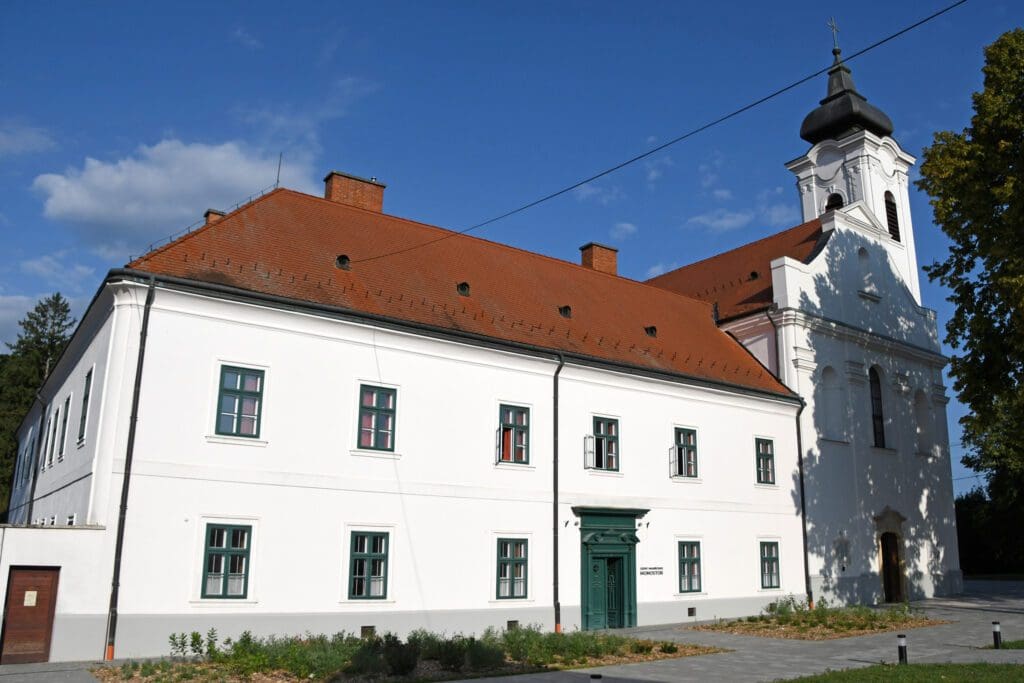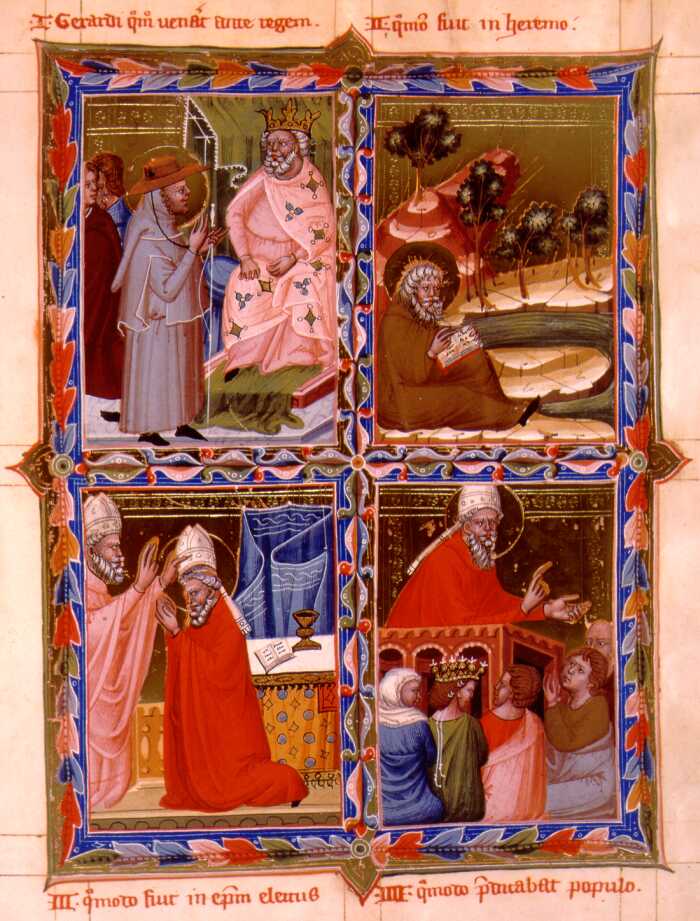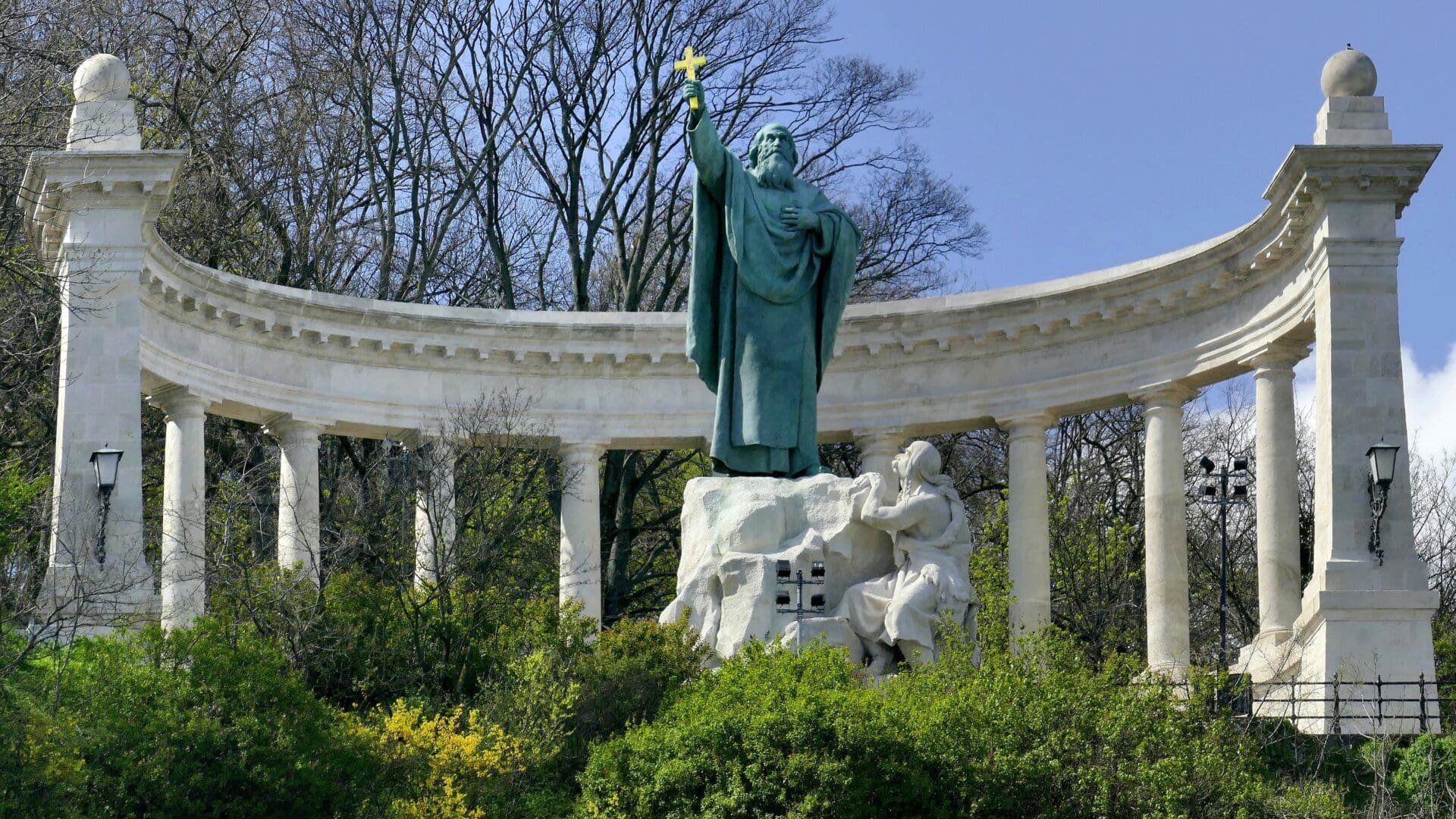Gerard, or Gellért in Hungarian, entered the history of the Hungarian and universal Church as the only prelate among the first Hungarian saints. Canonized in 1083, the only information we have about his early life is preserved in his legends written much later, as his original legend from around 1083 has been lost.
According to these records, he was born in Venice in the 970s and grew up in the Benedictine monastery on the island of San Giorgio Maggiore, where he acquired a theological education unparalleled in his time. From there, perhaps, he really did set off for the Holy Land to follow the example of St Jerome and study the manuscripts there, but when he reached the Dalmatian coast, the news of the Hungarian King (St) Stephen reached him.
He was one of the first among the ‘venedigos’ (that is, Venetians, hence the Hungarian word ‘vendég’, meaning ‘guest’) to arrive in the country,
where a life of struggle awaited him.
First, he was entrusted with the education of the heir to the throne, Prince Emeric, followed by seven years of hermit life in the Benedictine monastery of Bakonybél, located in the middle of a large forest. After King Stephen dealt with the last of the chieftains who had rebelled against him, Ajtony, the last great opponent of the orthodox Christian faith, Gerard became the first prelate of the new Latin rite bishopric founded in the lands that used to belong to Ajtony at the end of the 1020s. The Bishopric of Marosvár (Csanád) (today Cenadu Vechi, Romania), founded on the banks of the Maros River in 1030, became the centre of proselytizing and church organization, the daily work of which Gerard, who had a reputation as a famous orator, had a lion’s share in. The mission of fighting against the pagans, spreading the faith, protecting Hungarians and strengthening them in their faith and education remained the task of the bishopric for a long time. His homilies were first translated by interpreters, and perhaps later he also learned some Hungarian. In the battle against Ajtony, it was that St George to help the royal troops whose respect Gerard himself may have brought with him, and the new bishopric and the monastery next to it were also dedicated to.

After the death of King Stephen in 1038, a civil war-like stituation developed in the country, in which Gerard also took a major role. Surprisingly, the conflicts arose between the new king of Venetian origin, Peter Orseolo, and the bishops. By 1046, the events turned into a revolt against the Western (German and Italian) newcomers and Christians in general, during which almost the entire prelatry, including Gerard, lost his life. Of the victims, tradition preserved the name of Gerard, so we can honour him as the first martyr of the Christian Hungarian kingdom.
The day of his death, 24 September, became his feast in Hungary,
although recently, historians have suggested that he may have died on 29 August. In 1083, together with Stephen and his son, Prince Emeric, he was canonized by King (St) Ladislaus I. This also represented an appreciation of the young Christian kingdom in the eyes of the contemporary wider world.
The organization of the Hungarian church was helped by many well-educated foreign priests, of whom it is no coincidence that we know the most about Gerard. His literary interest is also known thanks to his legends: ‘And when he traveled from one place to another, he would not get on any kind of carriage, but on a simple cart, and sitting on it he would reread the books that he had edited under the guidance of the Holy Spirit.’
The famous ‘Admonitions’, a masterpiece of state theory in Latin, addressed to Prince Emeric from St Stephen, is also attributed to Gerard.
From this, in addition to moral teaching, the heir to the throne could learn the principles of good governance. The work was included in the Hungarian law library as its first volume. A large-scale explanation of the scriptures (Deliberatio), also in Latin, has survived in its entirety; he had started it in Italy and only finished it in Hungary. On the other hand, only fragments of his sermons written for each day of the year have survived.

The most shocking part of his legends is the description of his martyrdom, which happened in the area of today’s Budapest, while he and his escort were on their way to the Danube crossing in Pest. According to one version, his cart was pushed off Gellért Hill, which is now named after him (according to later tradition, he was first forced into a barrel), and then his head was crushed on a stone. First, he was buried in a nearby church, then in Marosvár, the seat of his bishopric, where the bloody piece of rock was also kept. His grave became a popular place of pilgrimage,and it was here that his cult developed over the centuries and his sarcophagus of Roman origin was found. At the scene of his death, on the side of Gellért Hill in Buda, a seven-metre-tall statue was erected in 1904 as a gift from Emperor and Hungarian King Francis Joseph.
Soon after his death, Gerard was included among Hungarian national saints; in 1092, a church synod ordered his national veneration, and his legend was later added to the late medieval handbook of saints, the Legenda aurea (the Golden Legend). After the expulsion of the Turks in the 18th century, the bishopric did not move back to Csanád, so the centre of Gerard’s veneration has since been the diocese of Szeged-Canád, based in today’s Szeged.
As a result of his cult in Hungary, he was also regarded with great respect in Venice,
with several famous families, such as the Sagredo and Morosini clans, competing to claim him as their kin,
and local legends were also born. His feast day in Venice is 23 February, which must have been the day of the transfer of some of his relics to the Italian town. His relics are scattered, with the most famous part being preserved in the Basilica of Santa Maria e Donato in Murano, from where a fragment was donated in 2001 to his supposed first burial place, the Inner City Parish Church in Budapest. Apart from Murano, his feast days were also commemorated in the Basilica of St Mark and the monastery of San Giorgio Maggiore, and in 1960 a new parish church was dedicated to him on one of the Venetian islands.
St Gerard’s cult is still very much alive in Hungary: in the Hungarian Defence Forces, he is the patron saint of technical troops, and because of his significant literary activity, he is the patron of Catholic schools and teachers.
Related articles:







